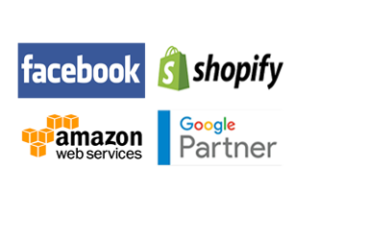

Digital Transformation 101 : Leverage Staff Augmentation Model
During an interview in 2011, Marc Andreessen famously proclaimed that “Software is eating the world.” Today, his words have come full circle. It is tough to think of a single industry where Technology , Software and Digital in particular have not transformed the way that industry operates . Now a days when it comes to automate and digitize business processes, companies have a lot of choices . They can buy licensed software typical SAAS (Software as a Service) & PAAS (Platform as a Service) products, or develop their own software solutions.
Most of the businesses leaders have stopped taking a transactional view of technology as a means to end, instead they consider technology as a key strategic element to transform their business models, how they deliver value to their customers or improve the way they collaborate. While digital technologies can certainly transform organizations, the dilemma these organizations typically face is whether to buy or build these transformative technologies.
Buy Vs. Build
In general, buying a software solution means that the overall solution:
• Is typically less expensive in terms of Total Cost of Ownership (TCO)
• Almost never perfectly fits all the organizational needs and business use cases
• May not evolve as quickly as the business
• Keeps the organization at a mercy of the software service provider if the provider has a bigger bargaining quotient owing to it having a majority market share viz a viz other players
On the other hand, building software typically translates to:
• Complete control over the features and timing • Greater Organizational and Management bandwidth in terms of time and capability
• A perfect fit for organizational needs and business use cases
• The ability to adapt when requirements change or the business evolves
• Higher overall cost of ownership and the continued need to maintain the solution
As you can see from the overall comparison between both of the options, there are obvious trade-offs to be made. In our opinion, before organizations decide on a particular option, they should evaluate their needs, business plans and vision rather than taking the popular option of aping what major competitors are doing. It is a no brainer that if building is solution is not central to the business and is suboptimal viz a viz their needs, they should simply buy.
However, if a business is constantly evolving at a rapid pace, if the solution is core to what they do or perhaps it even creates a differentiation in the marketplace, that company may want to consider building it. Before it does, there needs to be a significant executive buy-in. In fact, it’s not conducive to just take buy in from CIO/ CTO or CMO/COO. The role of business process owners (the so called Middle Management) is very crucial if the solution is core part of the business that creates differentiation. Assuming the organization decides to build, it needs to determine how exactly it will go about it. Will the company build all of it internally, outsource it all or use a hybrid of the two. So let us take at the routes typically taken by organizations.
Turnkey Outsourcing
Building software products and solutions internally is not easy. That’s why many companies choose to outsource entire development projects to service providers. These service providers build software professionally and employ a crack team of Tech Specialists/ Testers/ Product managers / Project Managers etc. As a result, organizations don’t have to hire their own resources and can simply outsource their requirements. Life seems to be all good !!!
Except, the fact that the service providers probably don’t not understand their client’s business to the core – certainly not as well as the client does. Also, now that the service provider had been hired to deliver the solution/software, company executives likely shift their focus on other, more pressing issues. This may work for small projects, but it could create a problem for large-scale solutions that are core to an organization’s business which is precisely the reason the company decided to build the software to begin with.
Without the right management involvement and focus, many solutions built by Software Service Providers had missed the mark when it comes to delivering the originally perceived value. In a nut shell, companies should ensure that service providers truly understand their business and that the company management remains actively involved throughout the project.
A Hybrid Solution (Via Staff Augmentation)
Having been part of the Digital Transformation Industry for good many years we have seen the benefits of having a hybrid development team firsthand. Some of the most complex and long-term projects we have been involved with were in close collaboration with customers. In most cases, the customer would leverage their own full-time resources to manage the software development road map, create designs and work with the end users.
They often also leveraged their own developers but augmented that team with experts from service providers like our. The model works well and essentially solves most of the problems that are plagued by either doing everything internally or completely outsourcing it. At the same time, this kind of team dynamic lowers the costs and maintains a high product quality because the customer is highly involved, highly invested and ultimately owns the success of the product.


